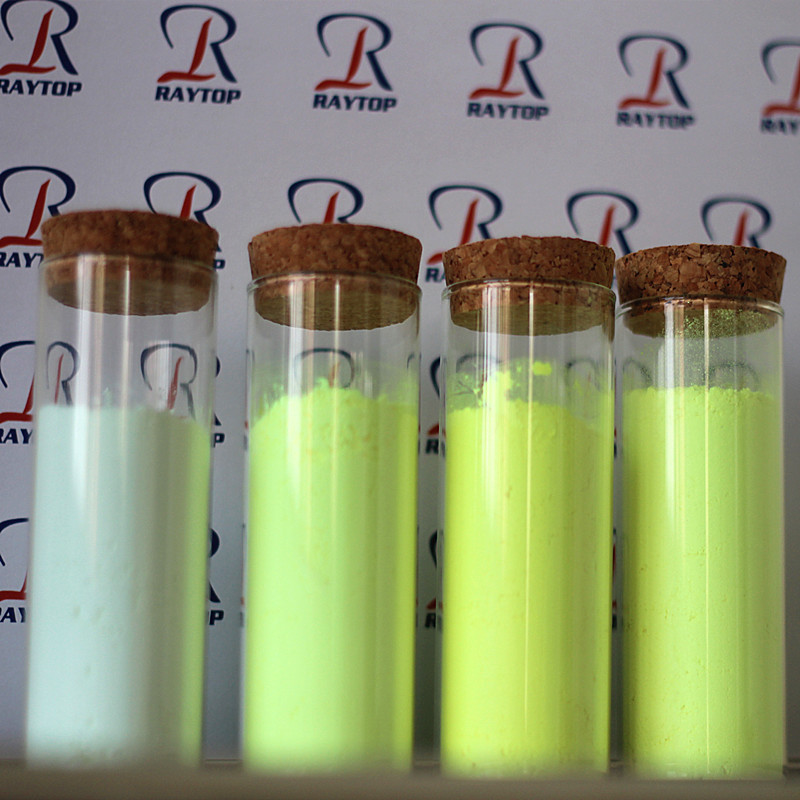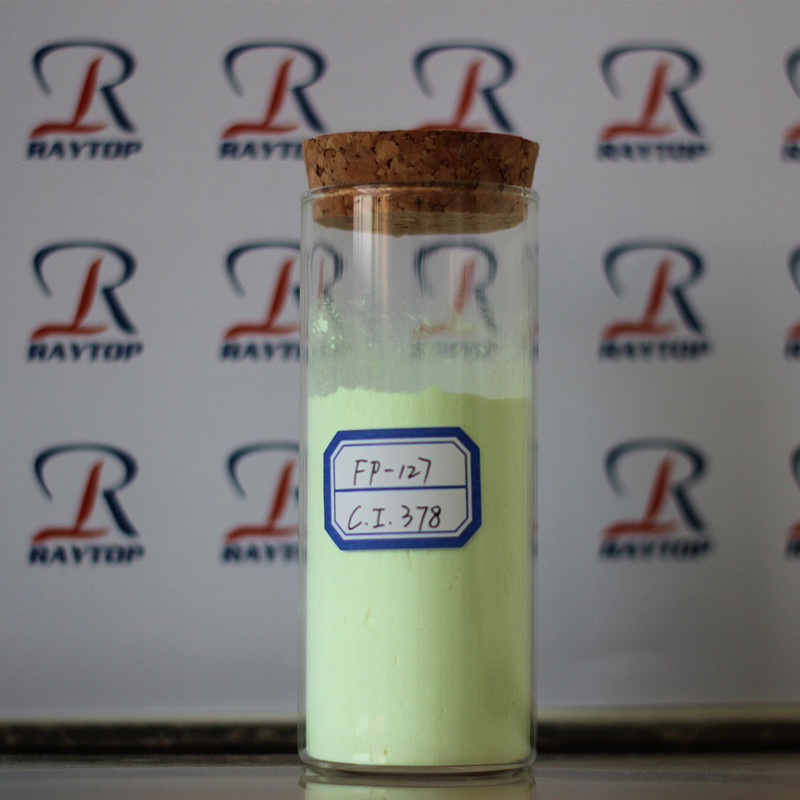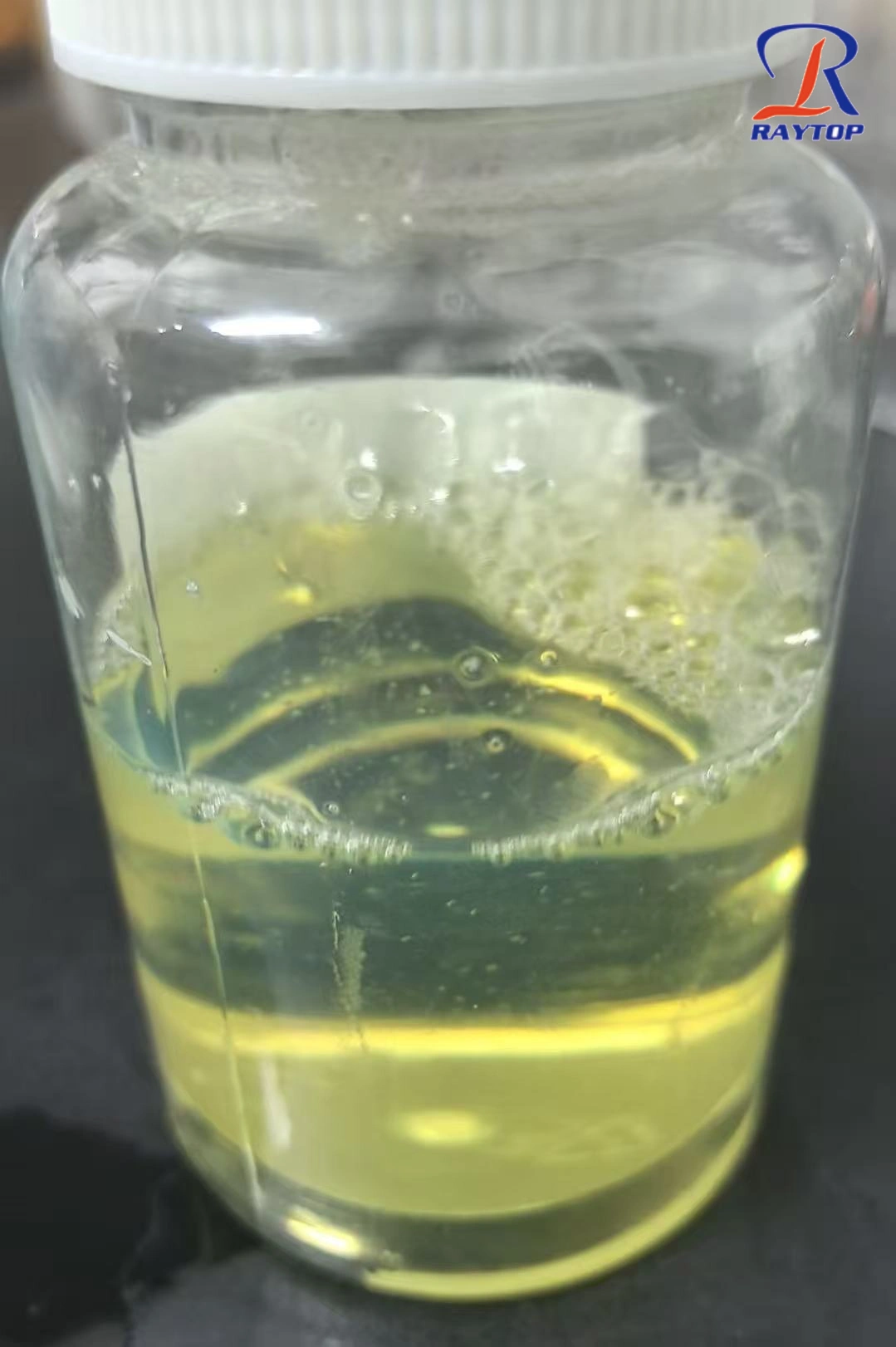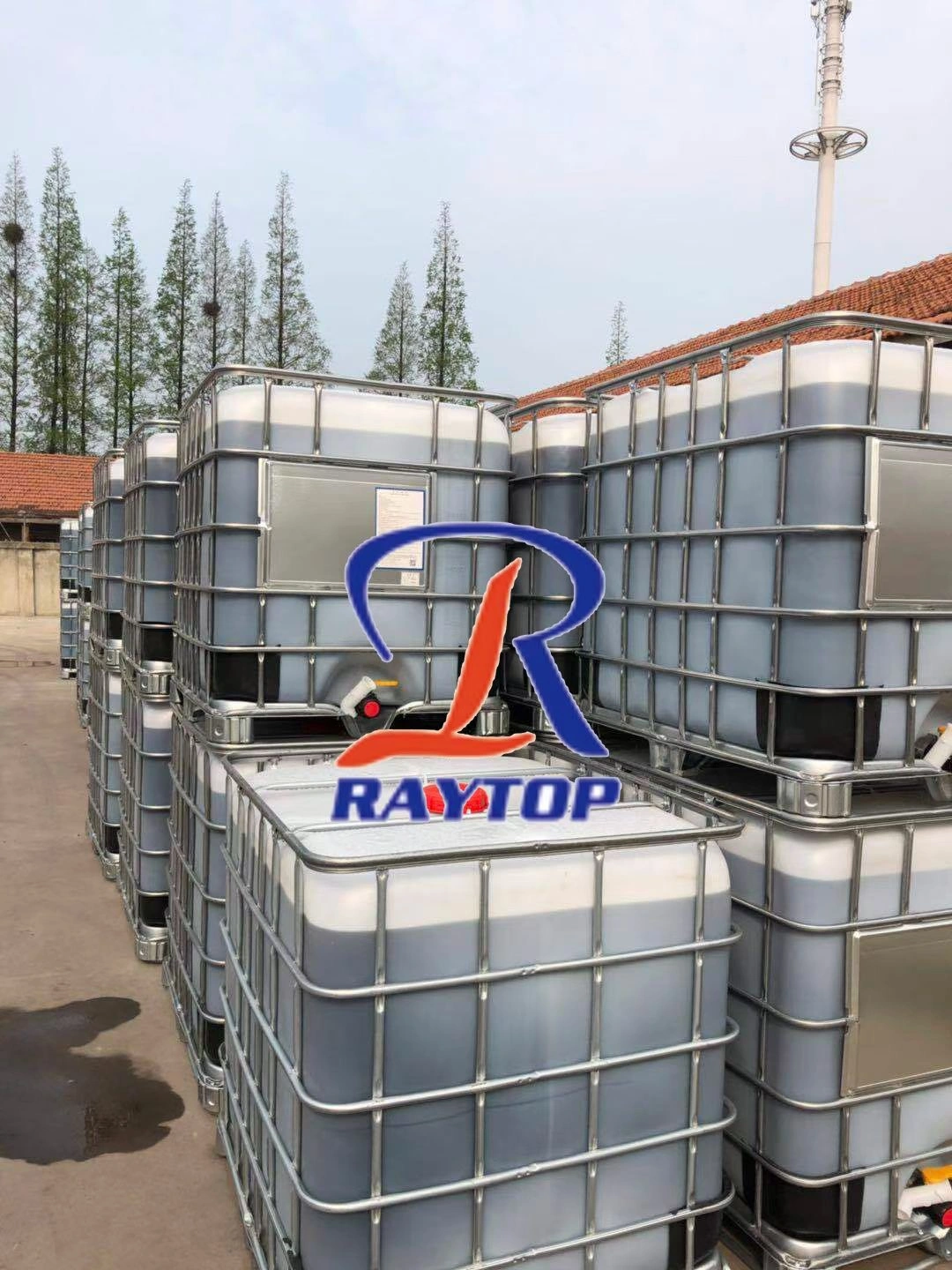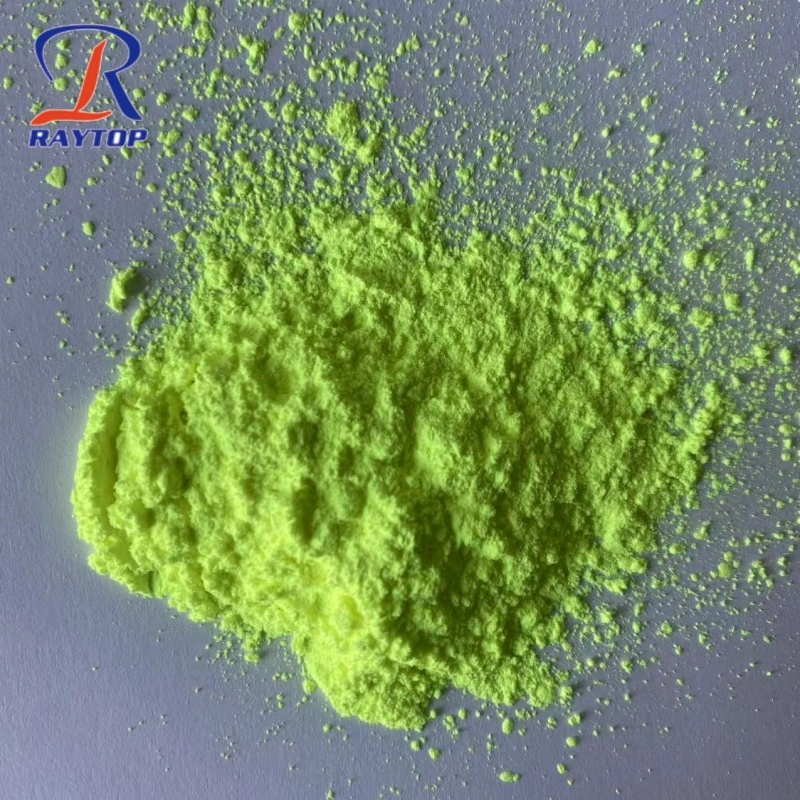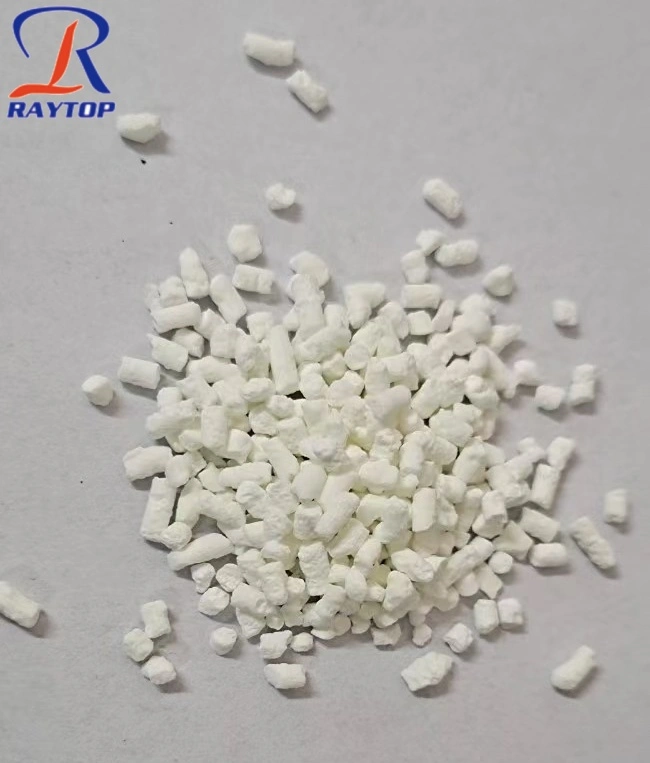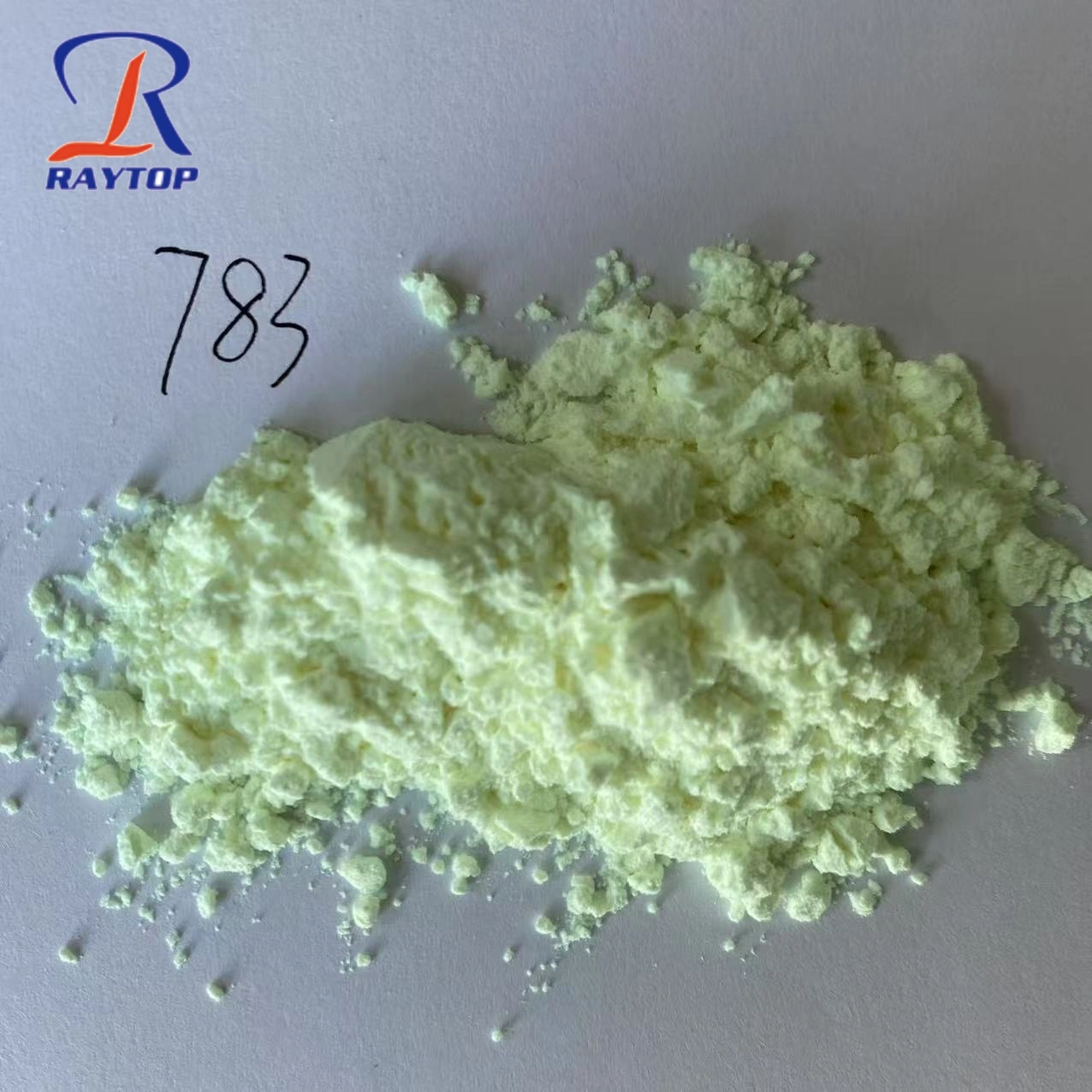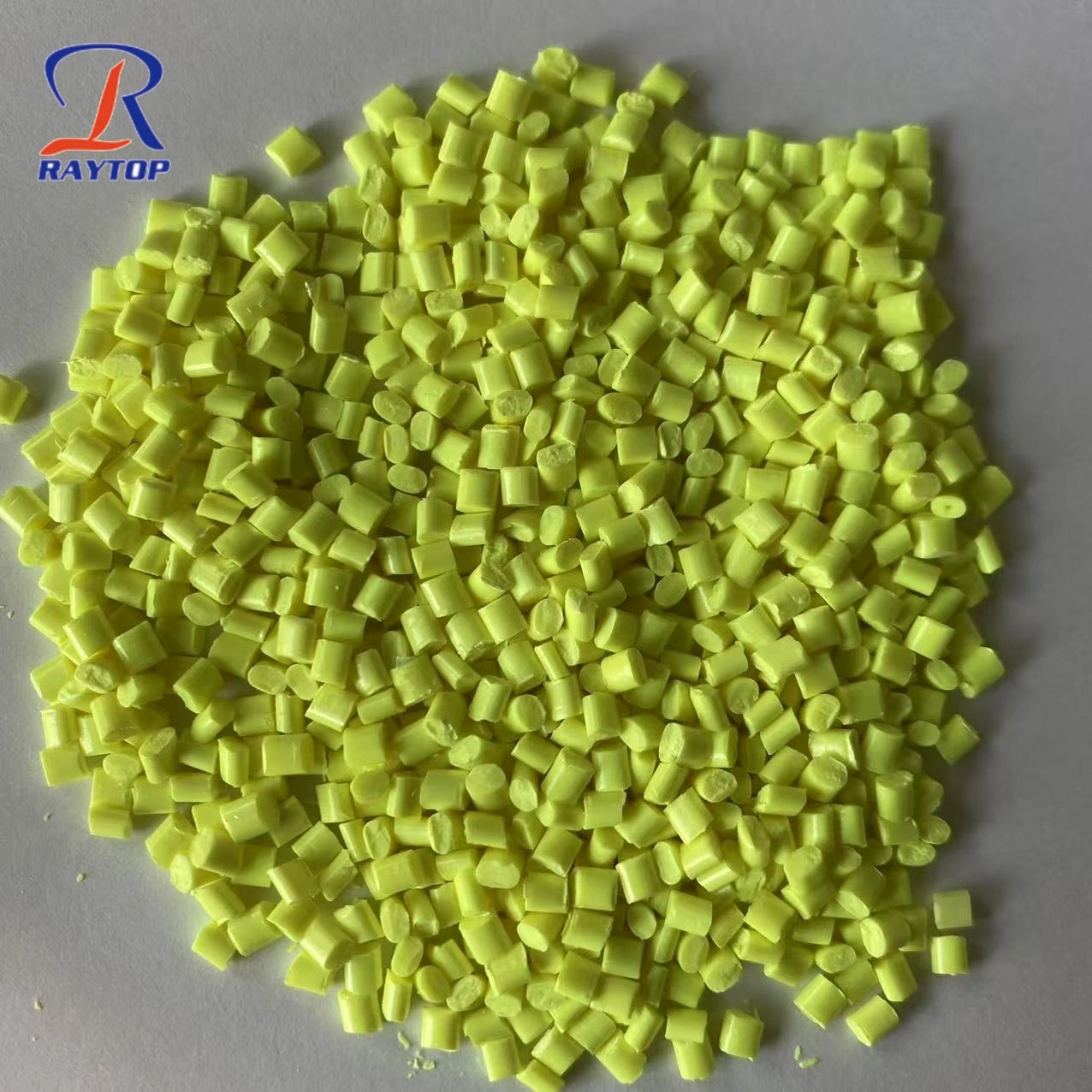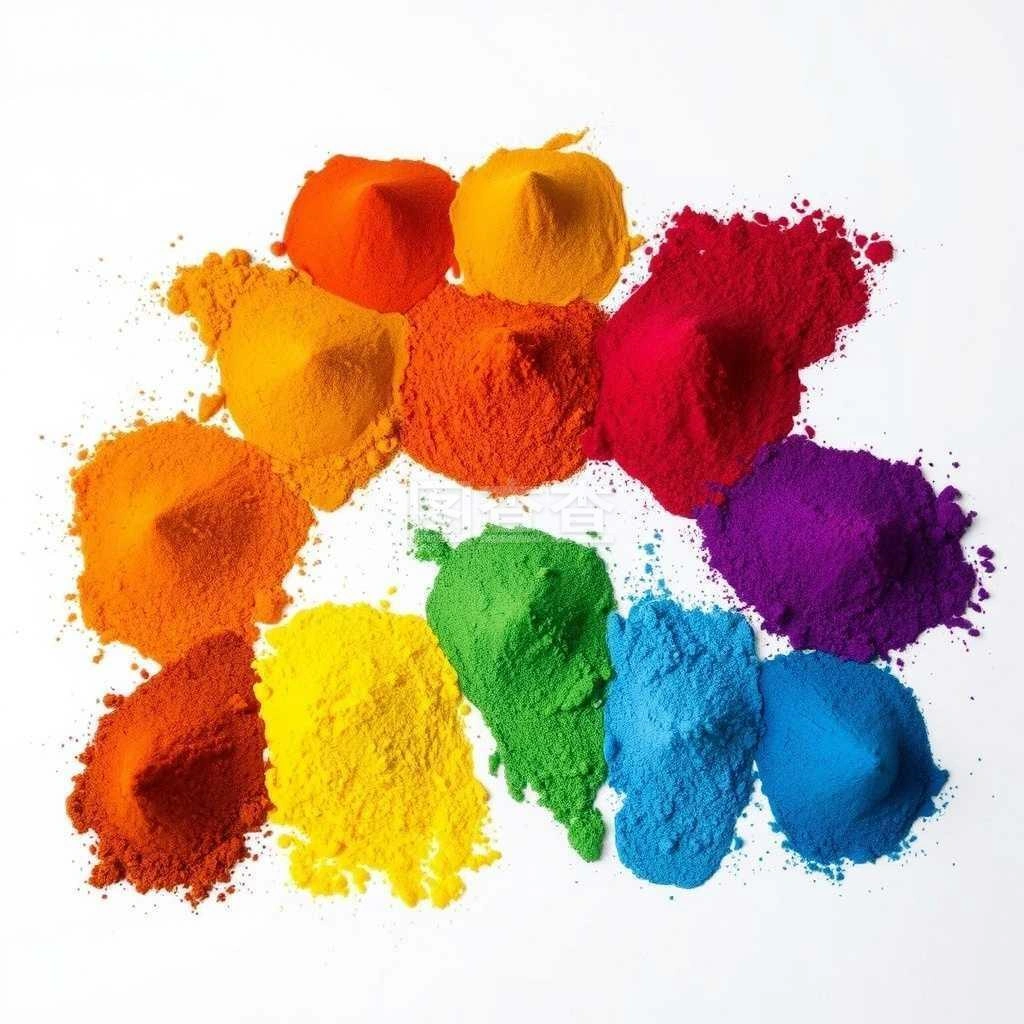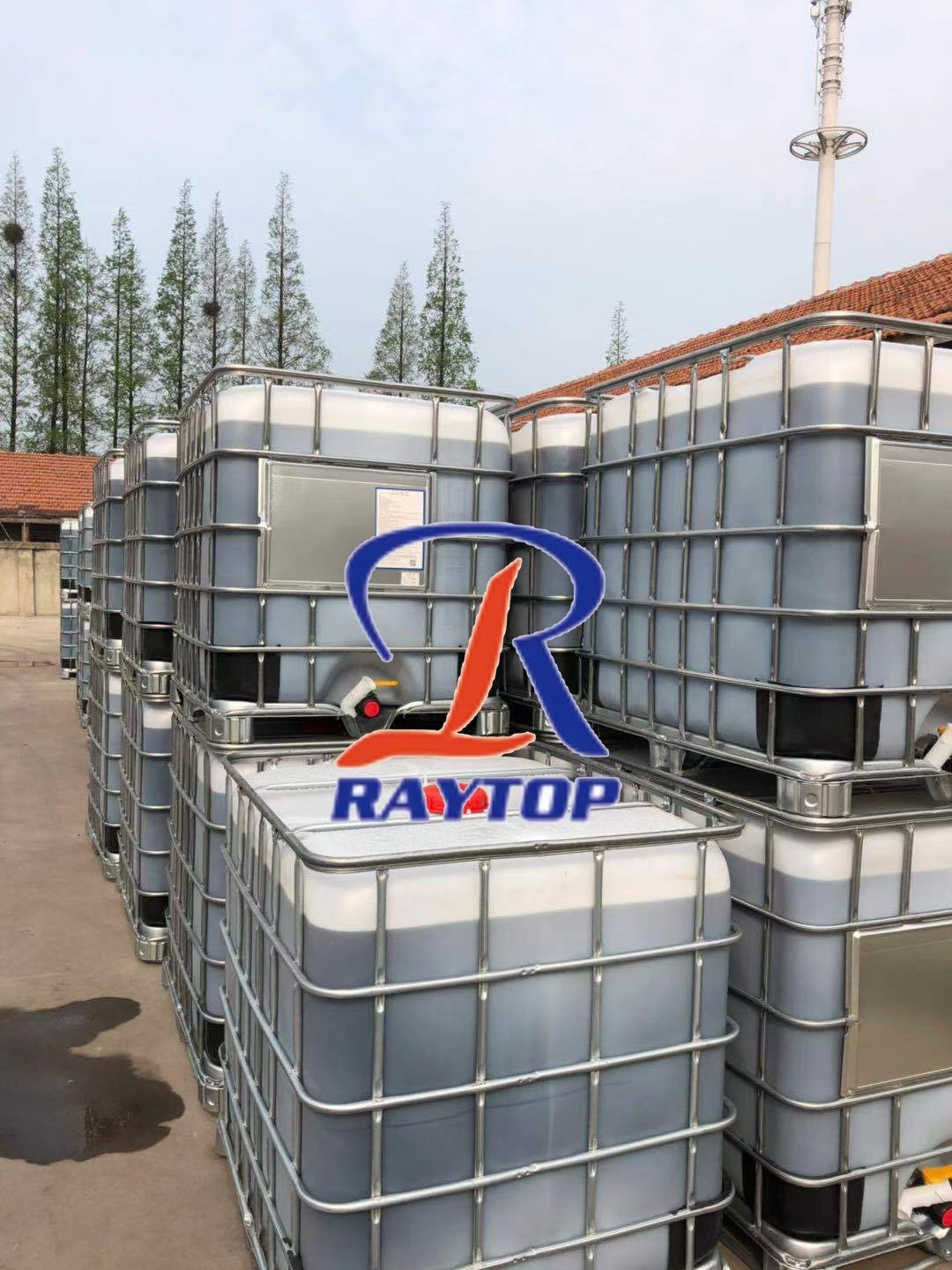The main types and uses of Fluorescent brighteners
Fluorescent brightener is a kind of fluorescent dye, or white dye, and it is also a kind of complex organic compound. Its characteristic is that it can excite incident light to produce fluorescence, so that the dyed material obtains a sparkling effect similar to fluorite, so that the material seen by the naked eye is very white, achieving a whitening effect. Today, we Rayto Chem will give you a brief introduction to the main types and uses of fluorescent brightener.
1. The principle and main types of fluorescent brightener.
Fluorescent brightener can absorb invisible ultraviolet light (wavelength range is about 360380nm), and convert it into longer-wavelength blue or violet visible light, so it can compensate for the undesired yellowish color in the matrix, and reflect more than the original incident More visible light with a wavelength in the range of 400600nm makes the product appear whiter, brighter and more vivid. Its function is to convert the invisible ultraviolet radiation absorbed by the product into purple-blue fluorescent radiation, which complements the original yellow radiation to become white light, and improves the whiteness of the product under sunlight. Fluorescent Brighteners have been widely used in textile papermaking ,washing powder, soap, rubber, plastics, pigments and paints.
The main types of Fluorescent brighteners
Fluorescent brighteners have a cyclic conjugated system in chemical structure. According to chemical structure, they can be divided into five categories: ①Stilbene type, used in cotton fiber and some synthetic fiber papermaking, soap making industries. With blue fluorescence;
②Coumarin type, with the basic structure of coumarone, used in celluloid, PVC plastics, etc., with strong blue fluorescence;
③Pyrazoline type, used in wool polyamide, Acrylic and other fibers have a green fluorescent color;
④ Benzooxynitride type, used for acrylic and other fibers and polyhydroethylene, polystyrene and other plastics, with red fluorescence;
⑤ Benzimide type, used for polyester and cyanide , Nylon and other fibers, with blue fluorescence.
2. Main properties and uses of fluorescent brighteners commonly used in plastic products
Fluorescent brighteners are divided into two categories in terms of use. One is water-soluble brighteners that can be used for paper, paint, washing powder, and cotton fabrics. The other is water-insoluble brighteners that can be used for chemical fibers. Whitening of plastics, etc. The fluorescent brighteners commonly used in plastic products mainly include OB.OB-1.CBS-127.KSN.KCB, etc., which are mainly used for various plastics to increase chromaticity, whiten, and reduce the amount of toner.
1). Fluorescent brightener OB
CAS number: 7128-64-5,
Chemical name 2,2'-(2,5-diphenylthio)bis[5-(1,1-methylethyl)]benzoxazole.
Molecular formula: C26H26N2O2S,
Molecular weight is 430.
The appearance of the product is light yellow or milky white powder, the light transmittance is 450nm296%, 500nm297%. In terms of structure type, it is a benzoxazole compound, which is hardly soluble in water, but soluble in alkanes, mineral oil, and common organic solvents.
Fluorescent brightener OB can be used for whitening thermoplastics, polyvinyl, polystyrene, polyethylene, polypropylene, ABS, acetate, paint, coatings, printing paints, etc., fluorescent brightener OB is used in various processing stages. The polymer in the whitening agent can give the processed product a bright blue-white luster.
In actual use, the fluorescent brightener OB should be added at 0.01~0.05% of the weight of the plastic, and it can be fully mixed with various plastic particles evenly. Similar foreign products include: UvitexOB.
2). Fluorescent brightener KCB (FBA367)
CAS number: 5089-22-5 (63310-10-1) is a benzoxazole type fluorescent brightener, and its chemical name is 1,4-bis(benzoxazolyl-2-yl)naphthalene.
The appearance is pale yellow or milky white crystalline powder.
The fluorescent brightener KCB is widely used in various plastics ,such as EVA,PVC,PP,PS etc. It can make the products do not change color, do not yellow, prevent aging, and extend the life. The whitening effect is more excellent for polyvinyl chloride, polypropylene, and other plastic products. The whitening and brightening effect for artificial leather products is particularly ideal, and it has the advantages of no yellowing and no fading in long-term storage.
In actual use, the dosage of the fluorescent brightener KCB is generally 0.01-0.05% of the weight of the whitened material. The whitening agent and the desired whitening material particles are fully mixed uniformly, and the molding process can be carried out.
3). Fluorescent brightener OB-1
CAS number: 1533-45-5.
The chemical name is 2,2-(4,4-stilbene) bisbenzoxazole, and the appearance is bright yellow crystalline powder.
The product has a melting point of 351-358°C and can with stand high temperature of 375°C. It is the best heat resistance among all brighteners. It is especially suitable for high melting point plastics such as polyester (PET). OB-1 has strong fluorescence. Brightening ability, good stability, compatibility with many polymers, it is an effective fluorescent brightener for plastic products, widely used in ABS.PS.HLPS.PA.PC.PP.EVA and rigid PVC and other plastics. OB-1 is also usually used in polyester correction filaments. Adding OB-1 to polypropylene, nylon, nylon and polyester will also significantly improve the whiteness. After adding OB-1 to recycled polyester fiber waste, bottle material and chips, the recycled material will appear whiter, and the color of different recycled materials will become whiter and consistent. For the whitening of high-temperature plastics, Lianda Fluorescence Technology strongly recommends the use of OB-1.
Fluorescent brightener OB-1 is added with 0.01~0.05% of plastic or polyester pellets before molding and processing of various plastic products or before spinning of polyester fiber, and then mix it with the plastic thoroughly.
4). Fluorescent brightener FP-127 (FBA378)
C.I.: 378
CAS NO.: 40470-68-6
Appearance: light yellow crystalline powder
The appearance is pale yellow or milky white crystalline powder, the larger absorption peak: 368nm, the larger fluorescence reflection: 436nm, the specific gravity: 1.23g/m3.
Fluorescent brightener FP-127 has a good whitening effect on various plastics and plastic products, and has a better whitening effect on polyurethane, polypropylene and other plastic products. It is particularly ideal for whitening and brightening artificial leather products. , And has the advantages of no yellowing and no fading in long-term storage.
Add the fluorescent brightener FP-127 to 0.01-0.05% of the weight of the plastic before the molding of various plastic products, and mix it with the plastic particles thoroughly.
5). Fluorescent brightener KSN (FBA368)
CAS number: 5242-49-9,
molecular formula: C29H20N2O2.
The appearance is bright yellow powder. Insoluble in water, soluble in high boiling point organic solvents such as benzene trioxide. The structure type is stilbene bisbenzimidazole type compound.
The fluorescent brightener KSN has a similar chemical structure to OB-1, but it has a better whitening effect on polyester fibers and plastic products than OB-1, and has better compatibility with plastics than OB-1, and it is used in a small amount. Can produce very good whitening effect, which is far behind OB-1. KSN is not only excellent in high temperature resistance, but also has excellent resistance to sunlight and weather. The fluorescent whitening agent KSN is also suitable for the whitening of polymer fibers such as polyamide and polyacrylonitrile. It can also be used in film, injection molding and extrusion molding materials. Good whitening effect.
Add the fluorescent brightener KSN to 0.01-0.05% of the weight of the plastic or polyester pellets before various plastic molding processing or polyester fiber drawing, and mix it with the material thoroughly and evenly.
